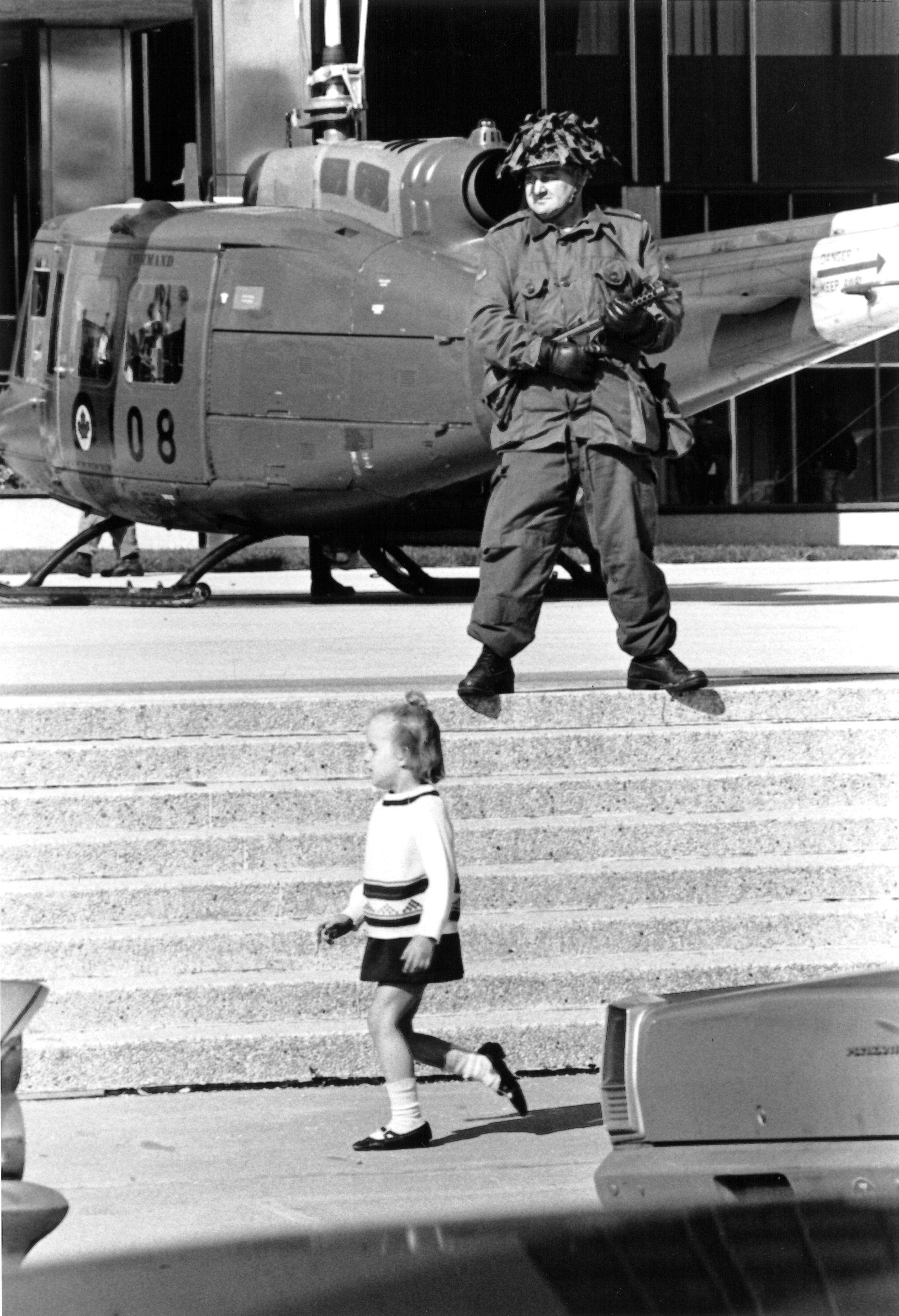Editorial
Vimy Ridge: Bloody Easter
The following article is an editorial written by The Canadian Encyclopedia staff. Editorials are not usually updated.

Enter your search term
Signing up enhances your TCE experience with the ability to save items to your personal reading list, and access the interactive map.
Create AccountEditorial
The following article is an editorial written by The Canadian Encyclopedia staff. Editorials are not usually updated.
"https://www.thecanadianencyclopedia.ca/images/tce_placeholder.jpg?v=e9dca980c9bdb3aa11e832e7ea94f5d9" // resources/views/front/categories/view.blade.phphttps://www.thecanadianencyclopedia.ca/images/tce_placeholder.jpg?v=e9dca980c9bdb3aa11e832e7ea94f5d9

Article
Their commander was Major Charles-Michel de SALABERRY, formerly of the 60th (Royal American) Regiment of Foot. His family had a well regarded reputation for serving the British Army, and he had served with the British against the French in the West Indies and at Walcheren.
"https://d3d0lqu00lnqvz.cloudfront.net/media/media/3c8e4ab9-41f4-46fd-bbd1-e45854bfb33d.jpg" // resources/views/front/categories/view.blade.phphttps://d3d0lqu00lnqvz.cloudfront.net/media/media/3c8e4ab9-41f4-46fd-bbd1-e45854bfb33d.jpg

Article
The War Measures Act was a federal law adopted by Parliament on 22 August 1914, after the beginning of the First World War. It gave broad powers to the Canadian government to maintain security and order during “war, invasion or insurrection.” It was used, controversially, to suspend the civil liberties of people in Canada who were considered “enemy aliens” during both world wars. This led to mass arrests and detentions without charges or trials. The War Measures Act was also invoked in Quebec during the 1970 October Crisis. The Act was repealed and replaced by the more limited Emergencies Act in 1988.
"https://d3d0lqu00lnqvz.cloudfront.net/media/media/c8a1d56b-60f5-40b0-86e2-3ce31bc3e7b0.jpg" // resources/views/front/categories/view.blade.phphttps://d3d0lqu00lnqvz.cloudfront.net/media/media/c8a1d56b-60f5-40b0-86e2-3ce31bc3e7b0.jpg

Article
The War of 1812 (which lasted from 1812 to 1814) was a military conflict between the United States and Great Britain. As a colony of Great Britain, Canada was swept up in the War of 1812 and was invaded several times by the Americans. The war was fought in Upper Canada, Lower Canada, on the Great Lakes and the Atlantic, and in the United States. The peace treaty of Ghent (1814), which ended the war, largely returned the status quo. However, in Canada, the war contributed to a growing sense of national identity, including the idea that civilian soldiers were largely responsible for repelling the American invaders. In contrast, the First Nations allies of the British and Canadian cause suffered much because of the war; not only had they lost many warriors (including the great Tecumseh), they also lost any hope of halting American expansion in the west, and their contributions were quickly forgotten by their British and Canadian allies. (See also First Nations and Métis Peoples in the War of 1812.) This article focuses primarily on land campaigns; for more detailed discussion of naval campaigns, see Atlantic Campaign of the War of 1812 and War on the Lakes in the War of 1812. Additionally, this is a full-length entry on the War of 1812. For a plain-language summary please see War of 1812 (Plain-Language Summary).
"https://d3d0lqu00lnqvz.cloudfront.net/media/media/56567521-2ca2-4ae0-bceb-b259db0aca8e.jpg" // resources/views/front/categories/view.blade.phphttps://d3d0lqu00lnqvz.cloudfront.net/media/media/56567521-2ca2-4ae0-bceb-b259db0aca8e.jpg

Collection
The War of 1812 (which lasted from 1812 to 1814) was a military conflict between the United States and Great Britain. As a colony of Great Britain, Canada was swept up in the War of 1812 and was invaded a number of times by the Americans. The war was fought in Upper Canada, Lower Canada, on the Great Lakes and the Atlantic, and in the United States. The peace treaty of Ghent, which ended the...
"https://d3d0lqu00lnqvz.cloudfront.net/media/media/d60240b0-5df1-48c0-bd0f-e3c0fbc67705.jpg" // resources/views/front/categories/view.blade.phphttps://d3d0lqu00lnqvz.cloudfront.net/media/media/d60240b0-5df1-48c0-bd0f-e3c0fbc67705.jpg

Article
The War of the Austrian Succession (1740–48) included conflict in Europe, North America and India. The military operations in North America are known as King George's War (1744–48).
"https://d3d0lqu00lnqvz.cloudfront.net/media/media/5a0c0b6b-1a28-4955-ac10-111582958476.jpg" // resources/views/front/categories/view.blade.phphttps://d3d0lqu00lnqvz.cloudfront.net/media/media/5a0c0b6b-1a28-4955-ac10-111582958476.jpg

Article
The War of the Spanish Succession, 1701–1714 (also known as Queen Anne's War), was a general European war that spread around the globe to include the colonies of the major powers — including French and English colonies in North America.
"https://www.thecanadianencyclopedia.ca/images/tce_placeholder.jpg?v=e9dca980c9bdb3aa11e832e7ea94f5d9" // resources/views/front/categories/view.blade.phphttps://www.thecanadianencyclopedia.ca/images/tce_placeholder.jpg?v=e9dca980c9bdb3aa11e832e7ea94f5d9

Article
The North American heartland, linked by rivers running from the north, west, and south and flowing eastwards via the St Lawrence River, saw intense fighting during the War of 1812.
"https://www.thecanadianencyclopedia.ca/images/tce_placeholder.jpg?v=e9dca980c9bdb3aa11e832e7ea94f5d9" // resources/views/front/categories/view.blade.phphttps://www.thecanadianencyclopedia.ca/images/tce_placeholder.jpg?v=e9dca980c9bdb3aa11e832e7ea94f5d9

Article
The two world wars of the 20th century were total wars that involved the whole nation, and the "home front" became a critical part of Canada’s effort.
"https://www.thecanadianencyclopedia.ca/images/tce_placeholder.jpg?v=e9dca980c9bdb3aa11e832e7ea94f5d9" // resources/views/front/categories/view.blade.phphttps://www.thecanadianencyclopedia.ca/images/tce_placeholder.jpg?v=e9dca980c9bdb3aa11e832e7ea94f5d9

Article
Wartime Information Board, est 9 Sept 1942, succeeded the Bureau of Public Information, which had been formed early in WWII to issue certain information on the course of the war to the public. By 1942 the government believed that its troubles over CONSCRIPTION derived from inadequate publicity.
"https://d3d0lqu00lnqvz.cloudfront.net/media/media/74f42cfb-9915-4a55-b62d-28b95a2c107f.jpg" // resources/views/front/categories/view.blade.phphttps://d3d0lqu00lnqvz.cloudfront.net/media/media/74f42cfb-9915-4a55-b62d-28b95a2c107f.jpg

Article
Wartime Prices and Trade Board, est 3 Sept 1939 by the Canadian government immediately before the onset of WORLD WAR II, and initially responsible to the Dept of Labour. Its creation reflected the government's concern that WWI conditions of inflation and social unrest should not return.
"https://www.thecanadianencyclopedia.ca/images/tce_placeholder.jpg?v=e9dca980c9bdb3aa11e832e7ea94f5d9" // resources/views/front/categories/view.blade.phphttps://www.thecanadianencyclopedia.ca/images/tce_placeholder.jpg?v=e9dca980c9bdb3aa11e832e7ea94f5d9

Article
The Women's Royal Canadian Naval Service (WRCNS) was established on 31 July 1942 during the Second World War. It was the naval counterpart to the Canadian Women’s Army Corps and the Royal Canadian Air Force Women’s Division, which had preceded it in 1941. The WRCNS was established as a separate service from the Royal Canadian Navy (RCN). It was disbanded on 31 August 1946.
"https://d3d0lqu00lnqvz.cloudfront.net/media/media/a8cc3a53-a1e2-4a3b-af86-9224843f1bee.jpg" // resources/views/front/categories/view.blade.phphttps://d3d0lqu00lnqvz.cloudfront.net/media/media/a8cc3a53-a1e2-4a3b-af86-9224843f1bee.jpg

Article
"Here was the world's worst wound." — Siegfried Sassoon, "On Passing the New Menin Gate" (1928) In early October 1914 the British Expeditionary Force left its positions on the Aisne River in France, moved to the left of the Allied line, and joined the Race to the Sea. While advancing northeastward, into the Belgian province of West Flanders, they collided with strong German forces advancing westward toward the Channel coast. The British and their French...
"https://d3d0lqu00lnqvz.cloudfront.net/media/media/72721b66-3911-4a78-8cec-26a091efe0f2.jpg" // resources/views/front/categories/view.blade.phphttps://d3d0lqu00lnqvz.cloudfront.net/media/media/72721b66-3911-4a78-8cec-26a091efe0f2.jpg
